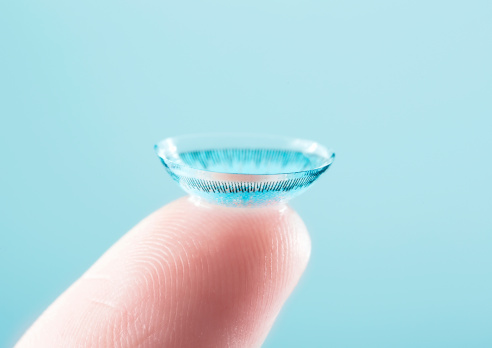
Can-C Bringing Comfort To Your Contacts
September 14th, 2017Millions of people around the world wear contact lenses.
Did you know that lactic acid can build-up behind your contact lens and lead to negative consequences?
Over-wearing contact lenses can result in damage from lactic acid within the cornea of the eye. A contact lens is a foreign body that is placed in your eye, a man-made object that sits on top of the cornea and interacts with the inner tissue. The cornea is made of living breathing sells. It supplies most of the refractive power of the eyes.
There are metabolic changes in the human body every day. Waste material and debris from the cells in the cornea are excreted. We often find little bits in the corners of our eyes and debris can sometimes collate underneath a tight-fitting contact lens. This, in turn, can create a toxic environment for the cornea.
How should you deal with an acid attack behind your contact lens?
Can-C™ eye drops are the original N-acetylcarnosine eye drop formula. N-acetylcarnosine lubricant eye drops possess all-in-one universal antioxidant protective effects. Unlike a lot of eye drops, they contain naturally occurring nutrients that combine amino acids and proteins. Can-C™ eye drops inhibit the build-up of lactic acid behind your contact lenses.
When a lactic acid level is too high, swelling occurs in the cornea causing it to spread apart. Bacteria and viruses can easily be absorbed into potential spaces within the swollen cornea. This can cause an infection and or scarring. Wearing a lens for too long can lead to oxygen deprivation to the eye, new blood vessels will begin to grow into the cornea to try to find the oxygen that it needs. This can become a big problem.
There are many factors which impact the type of lenses an individual feels comfortable with – the wear-time, if the wearer has allergies, the fit of the lens, cleaning and their disinfecting habits. If you wear contact lenses, you should feel good in them and your vision should be at peak performance. Contact lenses should never be uncomfortable but there are several reasons why they could be.
The most common reason for discomfort among lens wearers is the fit. Most people should be able to wear contact lenses for up to 12 hours comfortably. If the diameter of the lens and the curve isn’t the right size it can cause an issue. The cornea should be covered by the lens, although should move slightly when the eye blinks. Many wearers do feel discomfort, dryness or itchiness; this can be due to a number of factors.
Reasons that can cause discomfort could be:
- Allergies – are a major reason why people feel irritation from their contact lenses
- Lens type – there are 2 types, soft and rigid. Rigid Gas Permeable (RGP) lenses can be harder to adjust to, although known for their durability. Wearers may struggle more to adjust to the thickness of the rigid material.
- Cleaning – cleaning solutions are essential for both cleaning and disinfecting your lenses. However, some solutions can be an irritant and don’t remove build-up
- Wear-time – Like a lot of things, if you wear them for too long, they will cause discomfort
There are other reasons than contact lenses as to why your eyes may feel irritated. These can include:
- Pollution
- Computer use
- Working
- Travelling
- Dust
- Pollen
Can-C™ Eye drops allow contact lenses to stay in the eye in comfort for a longer period of time, improving the quality of your vision.
But that’s not all…
N-acetylcarnosine has also shown efficacy in the non-surgical treatment of age related cataracts. N-acetylcarnosine is known to reverse the glycation process and decrease the occurrence of long-term complications of aging.
N-acetylcarnosine Target Therapy
N-acetylcarnosine topical eye drops target therapy was seen, out of a cohort in excess of 50,500 patients seeking medical treatment for and to prevent against visual impairment, to give significant safety, efficacy and tolerability in the older population.
Accumulated study data has demonstrated that N-acetylcarnosine eye drops, alongside other IVP-designed new vision saving drugs, promote good visual health and help to prevent against vision disability from conditions including:
- Senile cataracts
- Age related macular degeneration (ARMD)
- Primary open-angle glaucoma
- Aging
- Diabetic retinopathy
N-acetylcarnosine has been seen as the “crown jewel” in the anti-aging market to help revolutionise early detection of visual problems, as well as treating and rejuvenating eye-disabling disorders related to aging.
Reduce the risk of a lactic acid attack, the Can-C™ eye drops are like artificial tears that can eliminate discomfort, refresh, soothe and cleanse tired eyes.
The demand for this breakthrough product is snow balling as consumers around the world become aware of its benefits and value for money. The eye drops can be taken in conjunction with Visoluten, a retina peptide.
Look and feel your best with Can-C™ eye drops.








